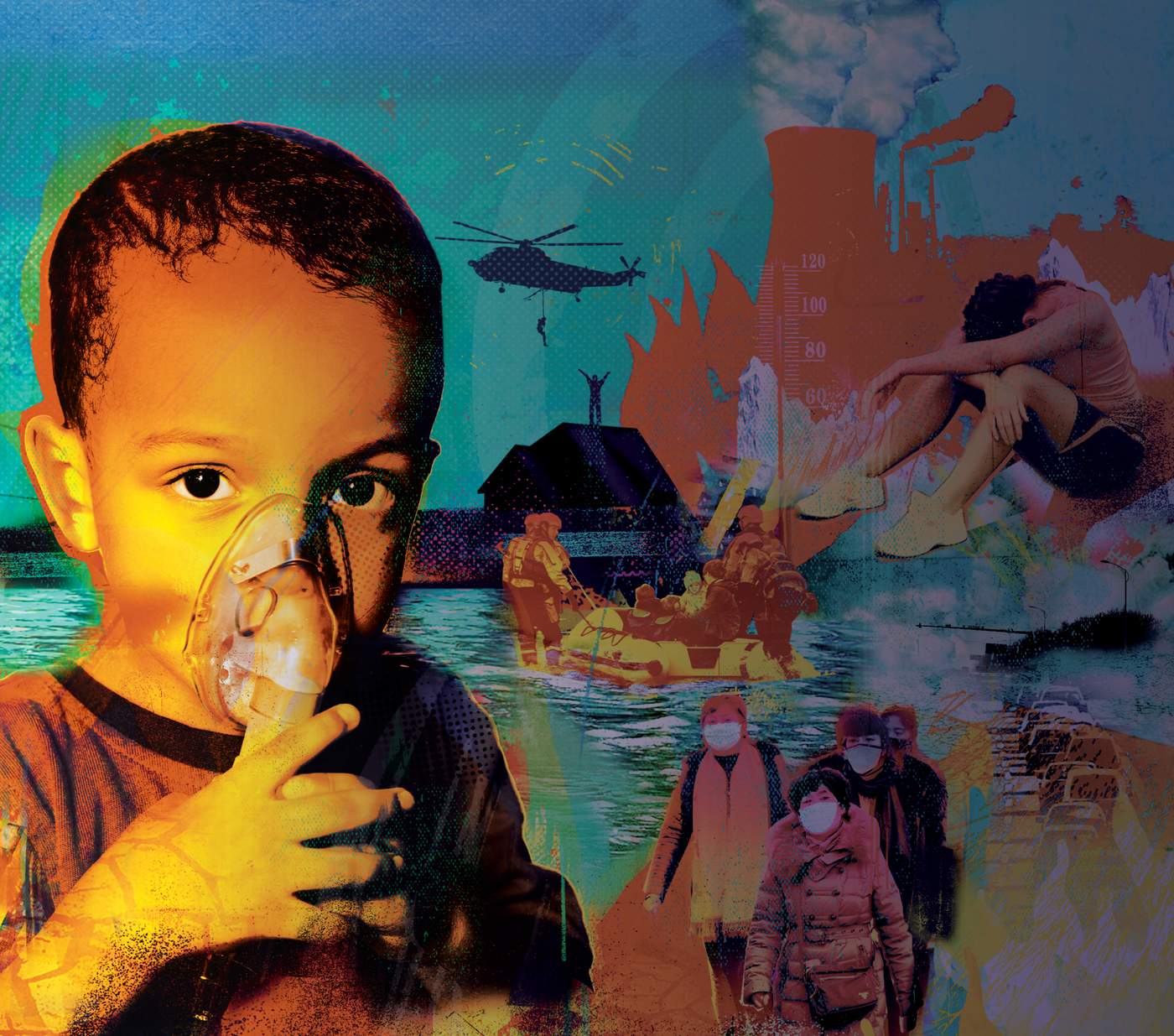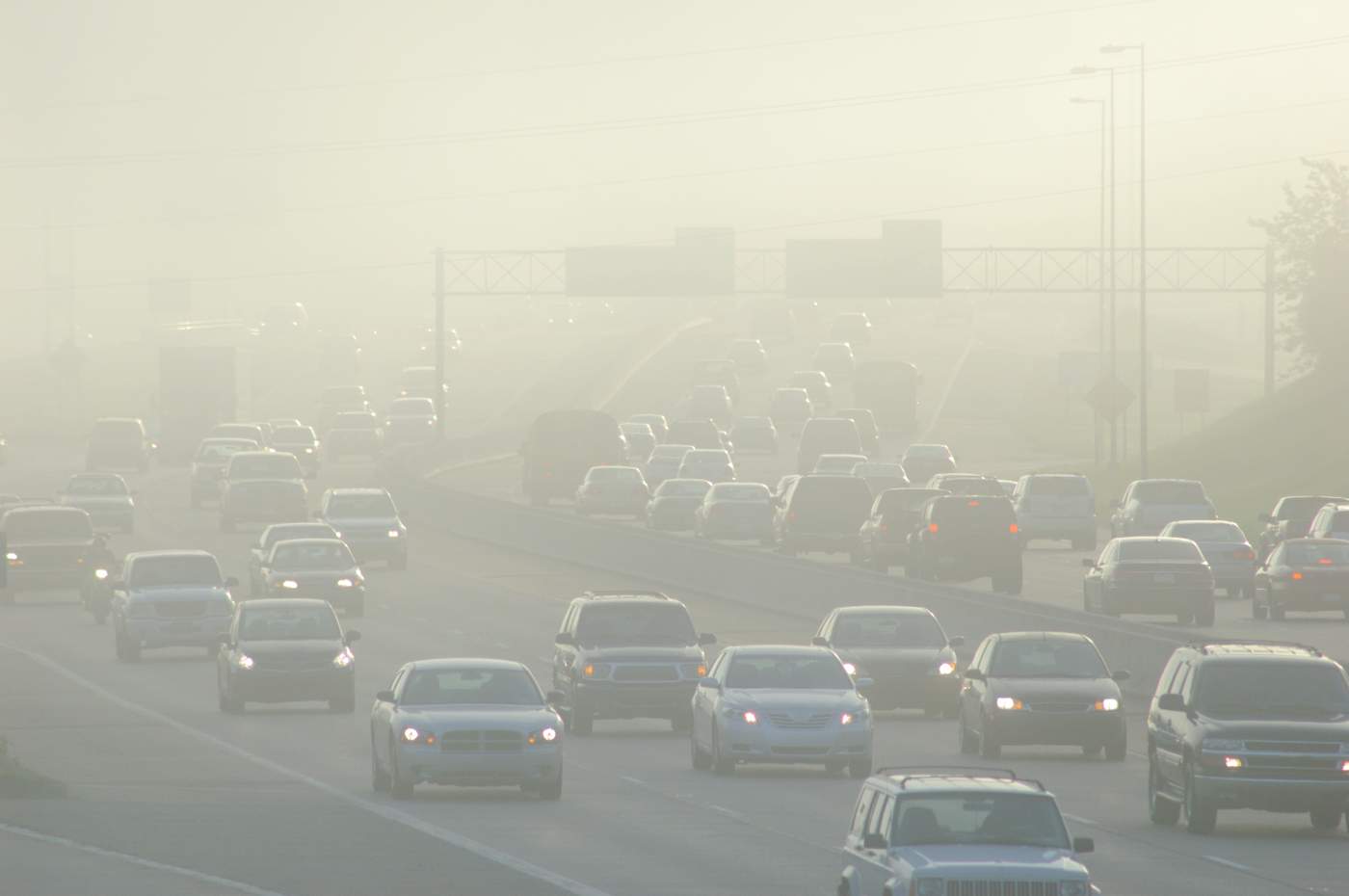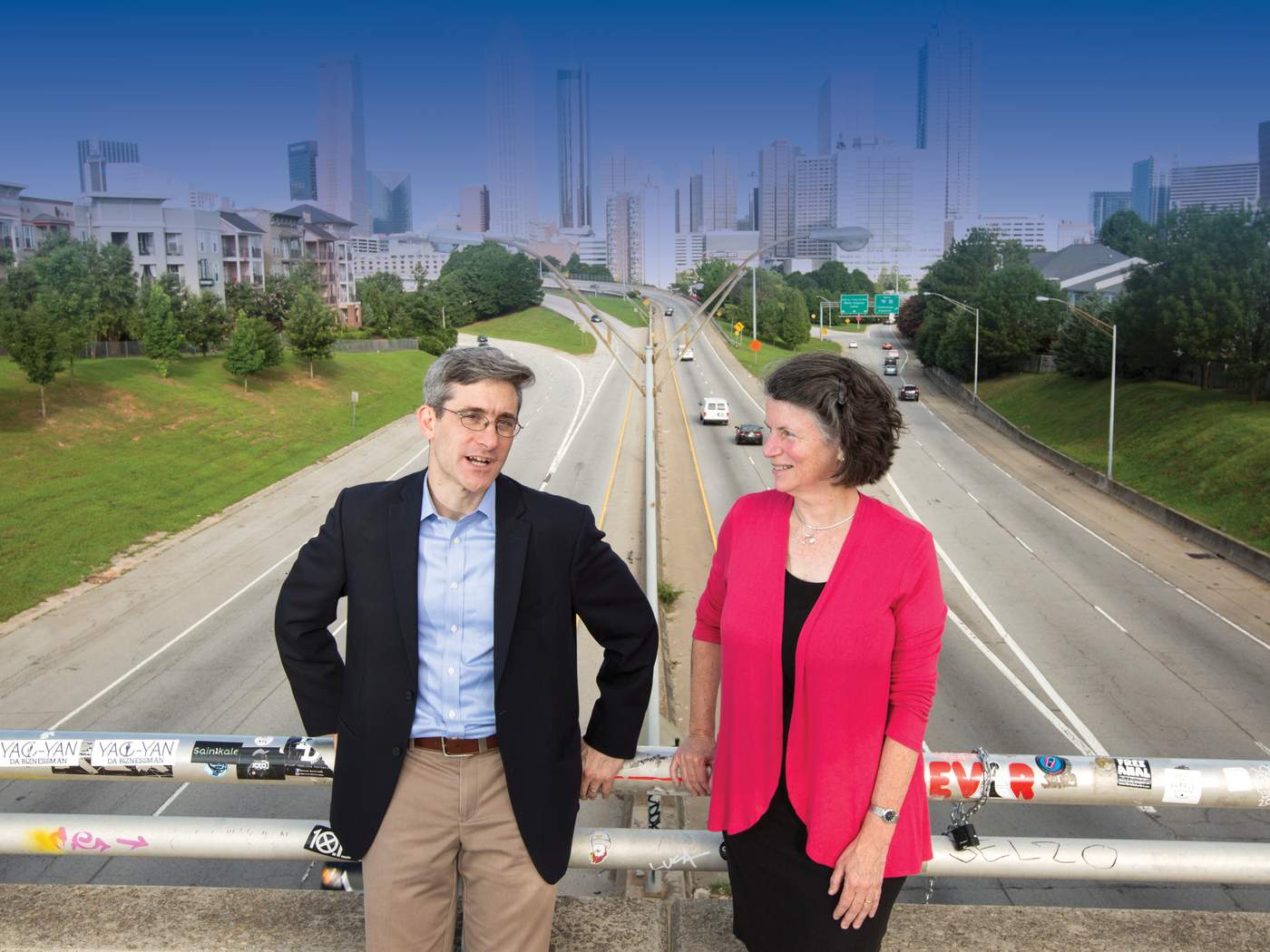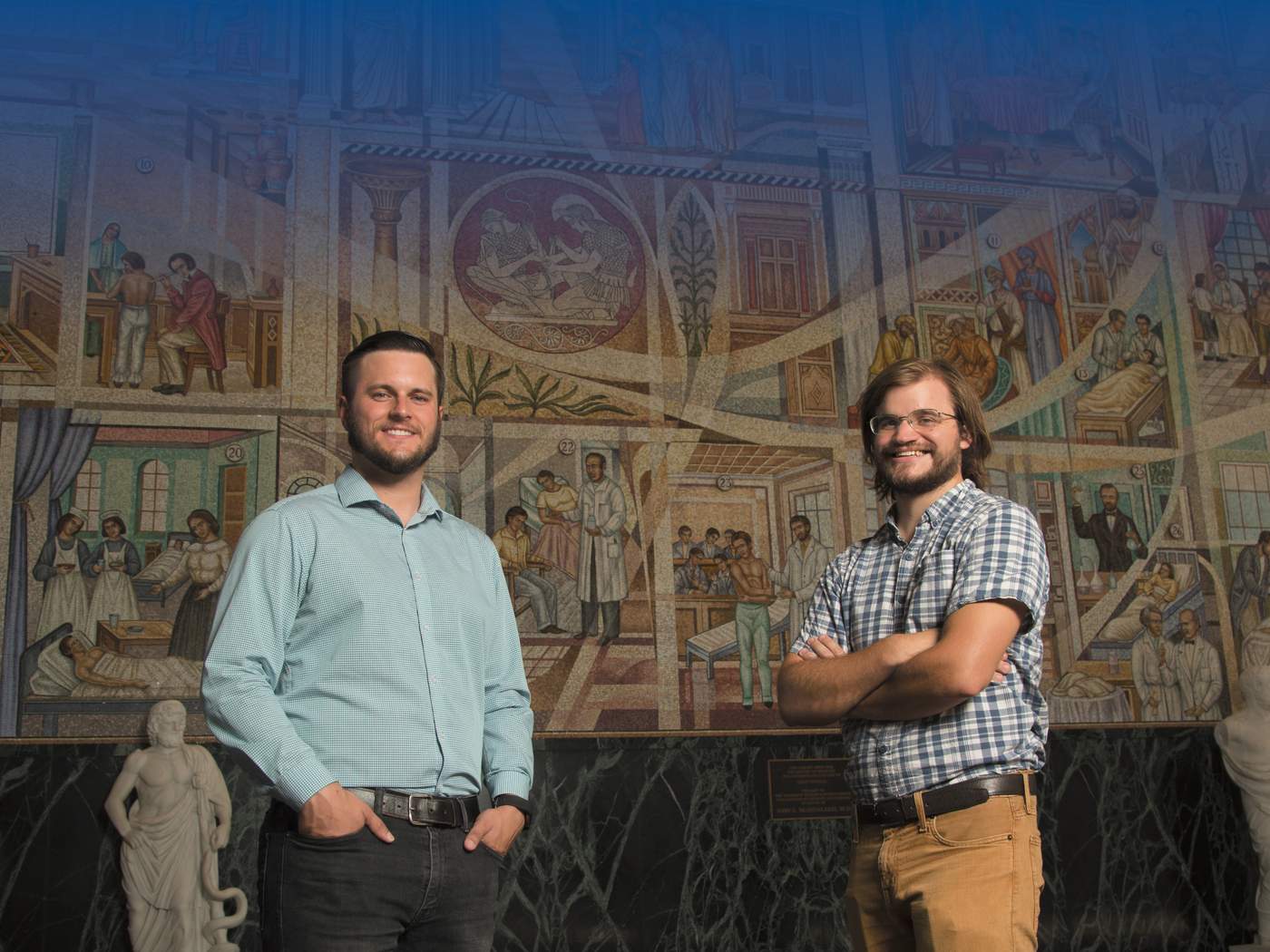
Response to climate change falls into two camps—mitigation (avoiding the unmanageable) and adaptation (managing the unavoidable).
While the former—reducing greenhouse gas emissions—is generally outside the public health purview, the profession can still play an important role. “Everything we can do to strengthen the world’s understanding of the health impacts of climate change strengthens the case for mitigation policy,” says Rochberg, who leads Climate@Emory.
The latter is solidly within the public health wheelhouse. “Measuring health impacts and devising interventions is what public health is built on,” says Karen Levy, associate professor of environmental health and epidemiology. “We have the knowledge and the tools to address water shortages, disease outbreaks, and sanitation issues. Investing in basic public health is perhaps the best climate change adaptation.”
Rollins researchers are tackling adaptation on several fronts:

Diarrheal disease

Levy first became interested in studying diarrheal diseases more than a decade ago, when she noted the paucity of studies about the relationship between climate and the disease that kills more than 700,000 children under the age of five each year. In one expansive paper about the relationship between climate and health, there was just one paragraph on diarrheal diseases, and that paragraph cited only two small studies.
So she spent the next five-plus years doing a systematic review of all the data about the incidence of diarrheal disease she could get her hands on, which was not easy since surveillance in the African and Asian countries where it is most widespread is patchwork. She then gathered data about temperatures, rainfall, flooding, and other weather conditions and compiled a body of work about the rather complicated relationship between diarrheal disease and climate change.
Levy looked at Bangladesh, which has better records about the incidence of diarrhea than many developing countries. She found that a 1° C increase in mean monthly temperature was associated with an 8 percent increase in diarrhea associated with one common pathogen—Enterotoxigenic E. coli.
“Eight percent might not sound like much,” says Levy. “But that would translate into an estimated 800,000 additional deaths in the near term. And that is from diarrhea from one specific pathogen in one country.”
In another study, Levy looked at the link between heavy rainfall and diarrheal disease in 19 rural villages in Ecuador. She found that when heavy rainfall followed a period of drought, diarrhea rates rose by 39 percent. But when the heavy rainfall occurred during the rainy season, diarrhea rates actually fell.
The most likely explanation, according to Levy, is that human waste accumulates on the ground and in unsealed latrines during dry periods and is washed into rivers and water holes during a heavy rain. However, human waste can’t accumulate when light rains constantly wash it away. Also, communities that treated their water, usually by boiling or chlorination, escaped the drought/heavy rainfall spike in diarrhea.

Photo | Karen Levy studies the relationship between climate change and diarrheal diseases in tropical and subtropical regions. She has found increases in temperature and in rainfall can result in more diarrheal deaths.
Food poisoning

Matthew Gribble is helping to build an understanding of the epidemiology of ciguatera fish poisoning (CFP). This is thought to be one of the world’s most common types of seafood poisoning, but exact numbers are hard to come by since its symptoms (vomiting, diarrhea, abdominal cramps, and blurred vision) mimic those of other types of food poisoning. Currently, there is no good way to test humans for CFP. The only way to officially confirm a case is to send a sample of the patient‘s fish meal to a lab to test for the toxin. As one can imagine, many cases are missed.
Preventing CFP is challenging. The toxin that causes CFP is tasteless, odorless, and colorless, so it’s difficult to identify infected fish. It is also hardy—you cannot bake, broil, fry, or freeze it out of the fish. It is found most commonly in popular reef fish, such as grouper and snapper, which become tainted by algal toxins.
Ciguatera-causing algae are abundant in the Caribbean, Pacific, and Indian oceans, and it may be expanding its territory as seas grow warmer. The impact will be felt most keenly in island communities that depend on reef fish for a main food source.
“This is partly a social justice story,” says Gribble. “These are not the communities that are driving climate change, but they are the ones being hammered by it.”

Photo | Matthew Gribble is building the body of evidence around ciguatera fish poisoning (CFP), one of the world’s most common types of seafood-related food poisoning. Warming oceans have spread CFP’s reach.
Climate modeling

Climate modeling lays the foundation for action on climate change. Rollins researchers led by Yang Liu are on the cutting edge of climate modeling, using the latest scenarios and developing novel tools that allow the existing models to be brought down to a scale that is actionable for public health interventions.
To further explain, a climate modeling primer is useful. To make sure the research of different scientists can be compared apples-to-apples style, all climate models use a standard set of scenarios that include starting conditions, historical data, and projections. In the 1990s, one set of scenarios was introduced—the Special Report on Emissions Scenarios (SRES) standards. These scenarios were replaced with updated versions in 2014 called Representative Concentration Pathways (RCPs).
Most scientists are still working with the SRES standards because data for those is more readily available. Liu and his colleagues, however, are using the latest scenarios. “Our group is one of the few that is publishing based on RCPs,” says Liu. “Using the RCPs makes our work more relevant and comparable with the latest IPCC [Intergovernmental Panel on Climate Change] work.”
But even new scenarios are limited because they are based on very crude grid sizes. Each data point represents 10,000 to 20,000 square miles on average—the size of a small state. While such coarse resolution can be useful on a national level, it is not particularly helpful for city, county, or even state planning for climate mitigation and adaptation.
Scientists can refine the model in one of two ways to make it meaningful on a smaller scale—statistical downscaling and dynamical downscaling. The latter involves nesting another region-specific model within the global model—a highly complex undertaking and one that Liu’s team has mastered.
“We have developed our own downscaling methods rather than using publicly available models, and there is a big difference,” says Liu. “We completed our first study on our models in 2013, so by now we are proficient in downscaling. Other institutions have started coming to work with us as a resource for their modeling efforts.”
Most climate modeling researchers are in atmospheric sciences or physical sciences departments, and they may collaborate with researchers in the public health department. “We are the other way around,” says Liu. “We initiate our study objectives within the school of public health, and we decide how the models are run. So instead of getting creative in using whatever data is out there, we are able to generate data that is as suitable as possible for public health applications.”
Such applications include calculating how many extra deaths will occur in the 2050s due to heat waves at the county level or how much public health burden wild fires will place on the Rocky Mountain states. “With our climate models, we can talk about health impacts in a way that makes sense to policymakers,” says Liu. “Our goal is to provide meaningful scientific support for policymaking.”

Photo | Yang Liu leads a team that is on the cutting edge of climate modeling. Using the latest scenarios and sophisticated downscaling techniques, Liu creates climate models that can be actionable by policymakers.
Respiratory diseases, asthma

Rising temperatures result in increased air pollution levels, longer pollen seasons, and more frequent extreme weather events such as thunderstorms. All are bad news for people with asthma and other respiratory ailments.
Stefanie Sarnat, associate professor of environmental health, has been studying how these factors translate into emergency room visits. Looking at just one contributor to air quality—ozone, a known respiratory irritant—Sarnat found a 5 percent to 10 percent increase in ER visits by asthma patients on days with the highest concentrations of ozone compared with days with low levels. Using climate and air quality models, she and colleagues projected that Atlanta may experience an 8 percent increase in the number of days that exceed the 75 ppb US National Ambient Air Quality Standard for ozone by 2041.Given today’s Atlanta population, these higher ozone levels would result in 267 to 466 additional asthma ER visits per year.
Pollen may be even more troubling for asthma sufferers, since a large percentage of asthma cases are allergic. Sarnat found a 10 percent to 15 percent increase in ER visits on days with highest concentrations of pollen versus those with low levels, particularly among children.
Thunderstorms can also trigger asthma attacks. While pollen grains are usually too large to enter the smallest airways of the lungs when inhaled, rain can cause pollen grains to rupture and release particles tiny enough to be inhaled deeply; strong winds from thunderstorms can spread these particles far and wide. Sarnat found that a small increase in ER visits for asthma occurs after every thunderstorm.
All these findings are likely the tip of the iceberg, says Sarnat, since her team looks only at ER visits. It’s a safe bet that for every person who goes to the ER, many more visit doctors or use their quick-relief medicine.

Photo | Stefanie Sarnat investigates how air pollution, pollen levels, and thunderstorms impact emergency room visits for asthma.






